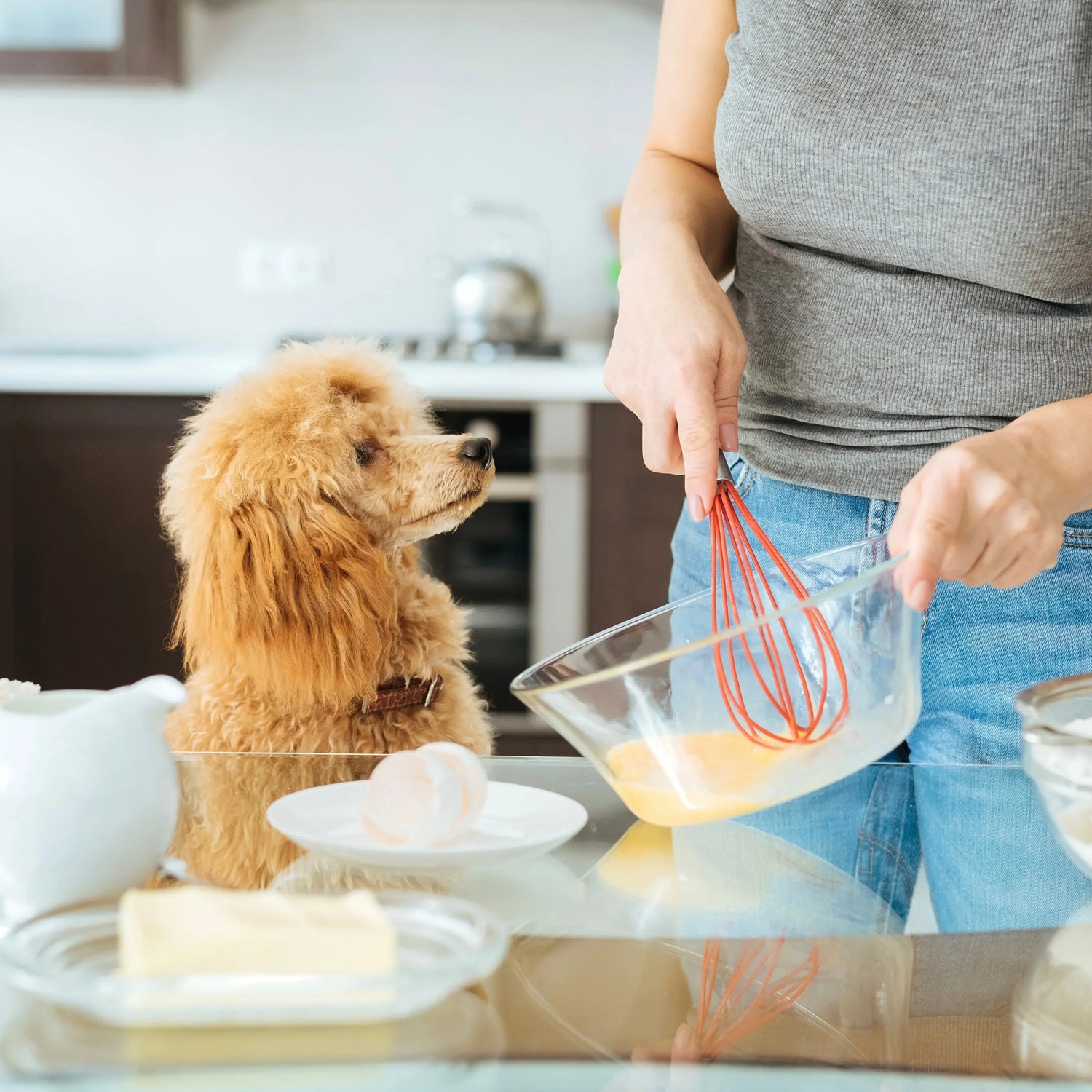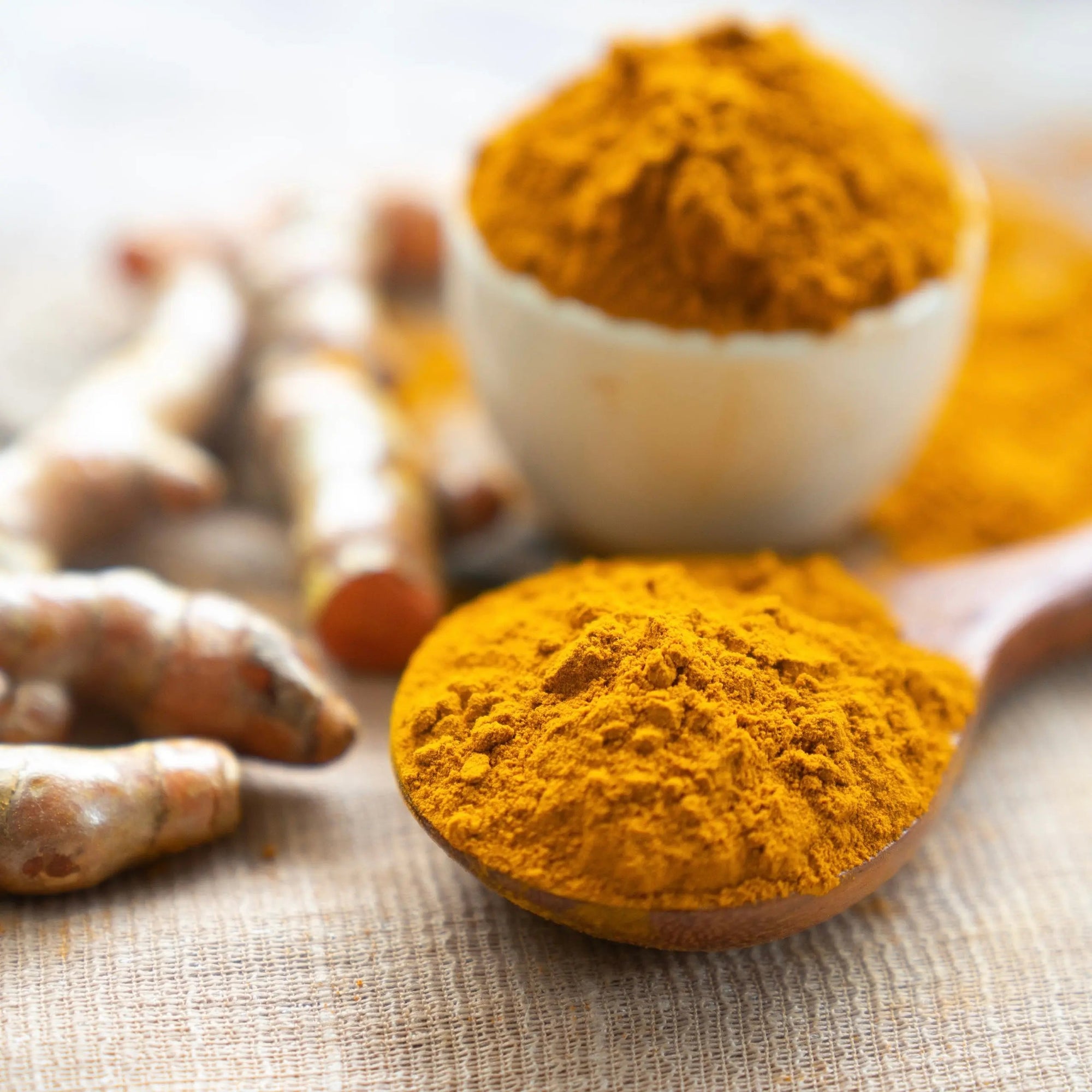Cooking for your dog is one of the best ways to ensure your dog lives a healthy, long life. It can also be an incredibly rewarding experience as you get to see just how much your pup loves the food you've made them! However, there are plenty of pitfalls when it comes to home cooking for dogs and it's important to know what mistakes to avoid in order to cook safe and healthy meals.
Not Balancing Out Nutrients
One of the biggest mistakes dog parents make when home cooking for their dogs is not balancing out the nutrients in their dog’s diet. Dogs require certain vitamins and minerals in their diet in order to be healthy. If a meal does not provide all the necessary nutrients, then it can lead to health problems down the line such as nutrient deficiencies and even broken bones.
“A considerable amount of research has gone into determining what nutrients dogs need to survive, and there is ample evidence showing what happens when they are deprived of calcium, iodine, selenium, magnesium, zinc, thiamine, manganese, vitamins D, E, potassium, and a whole range of critical nutrients necessary for cell growth, repair and maintenance.” Dr. Karen Becker, Doctor of Veterinary Medicine.
When creating a home cooked diet for your pup it is crucial to ensure they are getting the optimal nutrients.
The best way to do this is by using balanced recipes or including a supplement. Any balanced recipe should have the complete nutritional breakdown. This is exactly what inspired us to create Dog Child. Our Essential Nutrient Mix & Meal Mixes are formulated to ensure your dog is getting the optimal nutrients. Both our recipes and products have the complete nutritional breakdowns which can be found at the end of each recipe here and with our Meal Mixes here.
Variety Is Key
Another common mistake people make when home cooking for their dogs is feeding them the same thing over and over again. While this may seem like a convenient way of ensuring that your pup gets all their nutrients without having to worry about research or experimenting with ingredients, it can actually be detrimental to their health in the long run because it limits the variety of vitamins and minerals they are exposed to. To ensure that your pup gets all the nutrition they need while still enjoying different flavors each week, try rotating between different recipes on a regular basis.
This is why Dog Child created multiple balanced recipes and 3 different meal mixes that can be mixed with a variety of proteins for a wide variety of combinations. Check out our recipe community to find ways to add variety to your dog’s diet.
Feeding Meat & Vegetables Only
Another mistake to avoid is feeding your dog only meat and veggies and not meeting the minimum nutrient requirements with specific supplements or key ingredients. Many pet parents, like our founder Nicole, started cooking using the classic meat, rice and veggie mix, not realizing she was missing essential nutrients like essential fatty acids and fiber which are both crucial for your dog’s long term health. In fact, 95% of homemade dog food recipes online are lacking essential nutrients.
Fiber is a key ingredient to meet enzyme, fiber, antioxidants, and phytonutrients along with probiotic fibers for digestion and gut health. Essential fatty acids are important to skeletal health, immunity and for your dog’s organs to function optimally. If fatty acids are not balanced it can lead to health issues including skin and coat health and chronic inflammation.
Antioxidant-rich fruits should not be overlooked when designing a nutritionally balanced diet for your pup. As part of the meal or as treats, incorporating pureed fruit can help provide essential vitamins to keep your pet healthy.
Using Unhealthy Human Ingredients
It may seem like a good idea to add your favorite foods like cheese or garlic to your pup’s meal – after all, we humans enjoy those ingredients in our own food! But while some human ingredients can be safe in small amounts (like plain cottage cheese), others can be toxic to dogs – like onions, avocado and grapes. Always check the safety of any ingredient you plan to use before adding it to your pup’s meal!
Failing to Monitor Portions
Many dog owners fail to monitor portions when cooking for their pup at home. It can be hard to know exactly how much food your pup needs on a daily basis – especially if you don’t have an accurate weight measurement on hand. Make sure you measure out proper portions every time you prepare food for your pup so that they don’t overeat or under-eat! Follow our easy portion guidelines found here.
Avoiding Allergens
Just like humans can have allergies, so too can dogs. Unfortunately, many people don't realize this until after they've already fed their pup something they are allergic too. Common allergens found in pet food include beef, chicken, corn, wheat and dairy products. Food allergies can present themselves in dogs with itching, flakey skin and biting at their paws. You can test out different proteins to see if this helps but you must limit each protein for at least 8 weeks. Always consult with your vet further on allergy issues.
Skipping Supplements
“There are only two options for assuring nutritional adequacy in homemade diets: feeding a more expensive, whole food recipe that contains a significant number of diversified ingredients necessary to meet nutrient requirements or using supplements….I can't emphasize enough the importance of ensuring it's nutritionally balanced. Making your dog's food from scratch requires you to ensure you're meeting macro and micronutrient requirements. Do not guess!” - Dr. Raditic, a former professor for both the nutrition and the integrative medicine services at the University of Tennessee College of Veterinary Medicine.
Adding a supplement such as Dog Child’s Essential Nutrient Mix takes the guesswork out ensuring your dog is getting the right nutrients. Also dogs may benefit from probiotics or prebiotics for gut health and vitality. Read more about the benefits of probiotics for dogs.
Some additional tips for home cooking:
- Measure out ingredients rather than cups for nutritionally accuracy
- Meal prep by cooking a week or month’s worth of food and storing in the freezer
- Blend ingredients finely for maximum digestion and so your dog can’t pick out veggies
- Poaching proteins to maintain their essential amino acids
- Upcycling from your kitchen rather than throwing out that broccoli stem or brown banana - use as healthy ingredients in your home cooked meals
In conclusion, cooking homemade meals for your dog is an incredibly rewarding experience! Not only do you get to see just how much they love what you've made them but you also have complete control over exactly what goes into each meal so that you know that your pup is getting everything they need nutritionally every day. However, there are some common mistakes that people make when home cooking for their dogs such as not providing enough nutrition or feeding them the same thing over and over again which can lead to health problems down the line. To ensure that your pup stays healthy while still enjoying delicious homemade meals regularly remember these tips—provide nutritional balance; avoid allergens; and always provide variety! With these tips in mind, let's start cooking up some delicious meals our pups will absolutely love!



